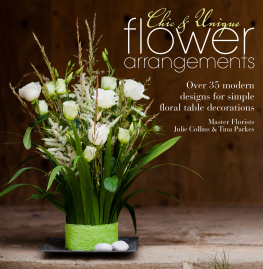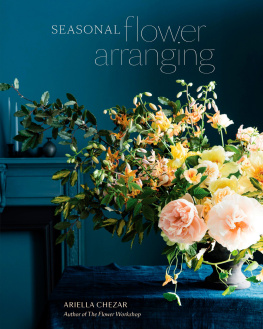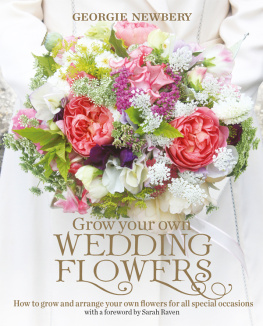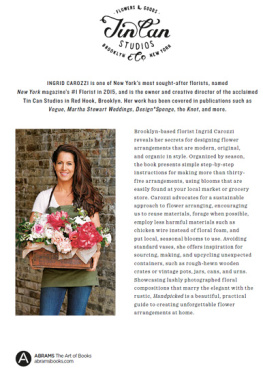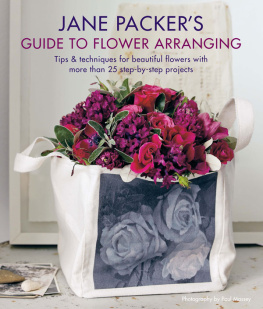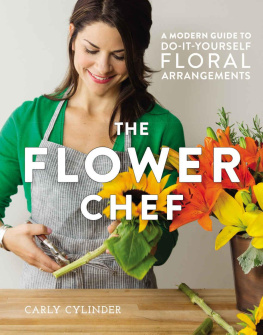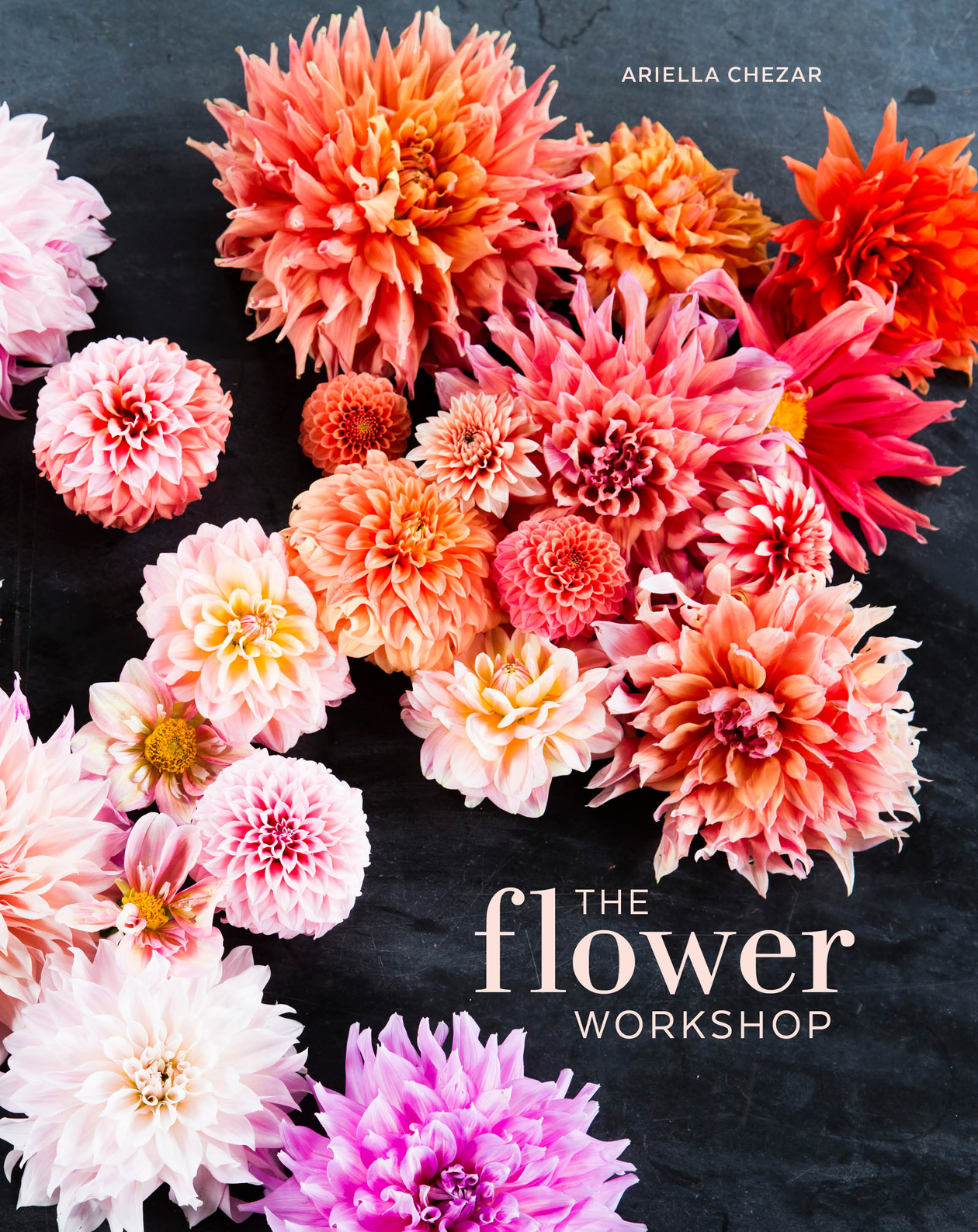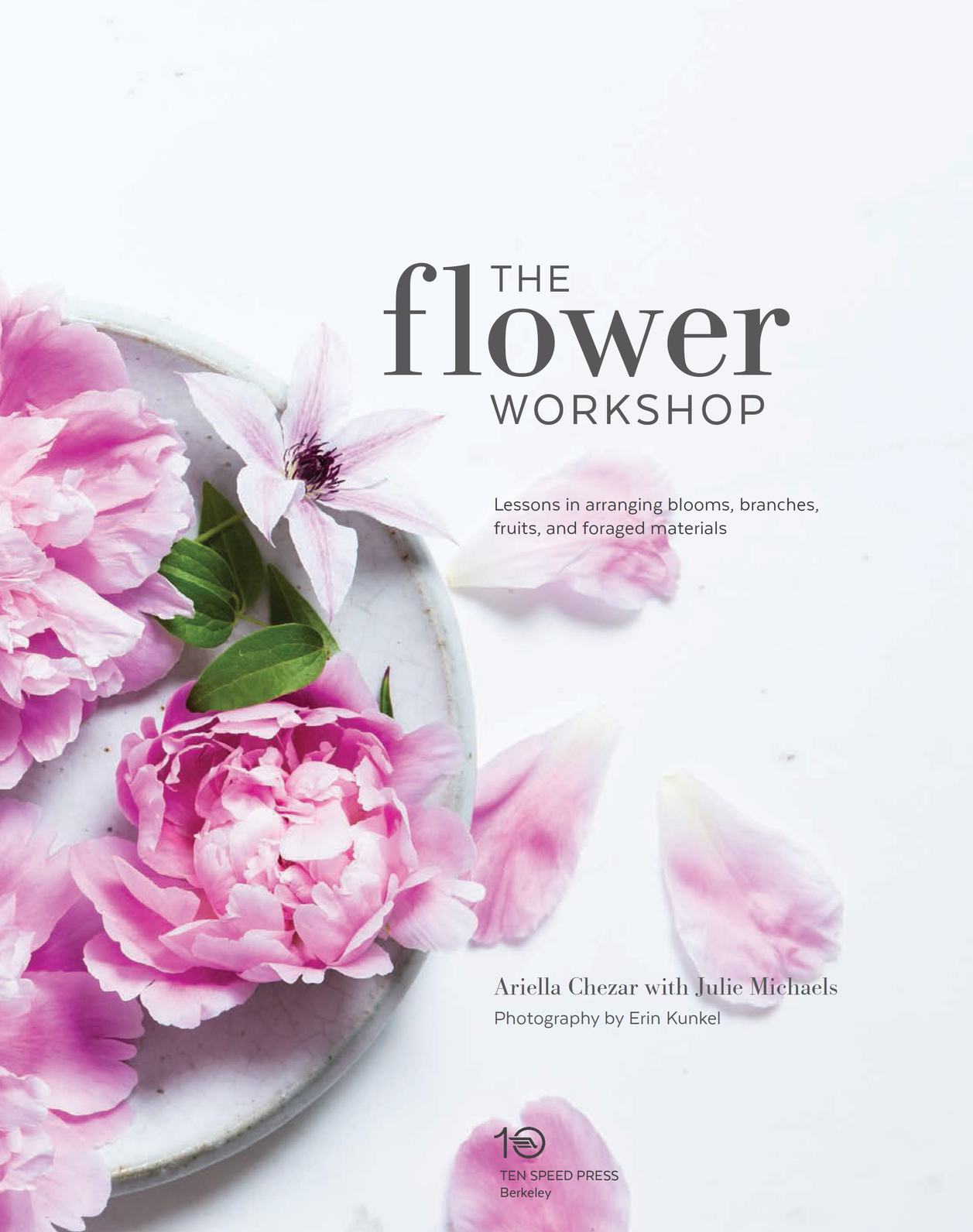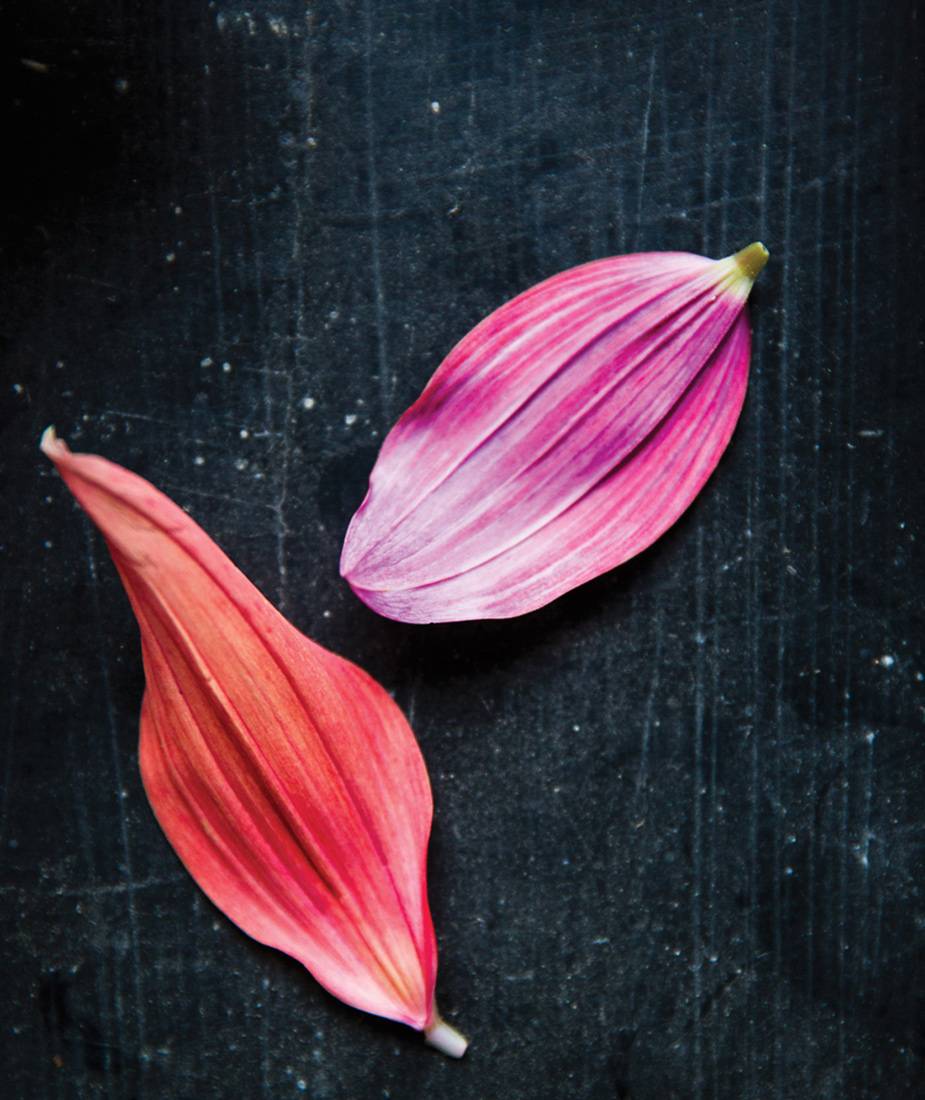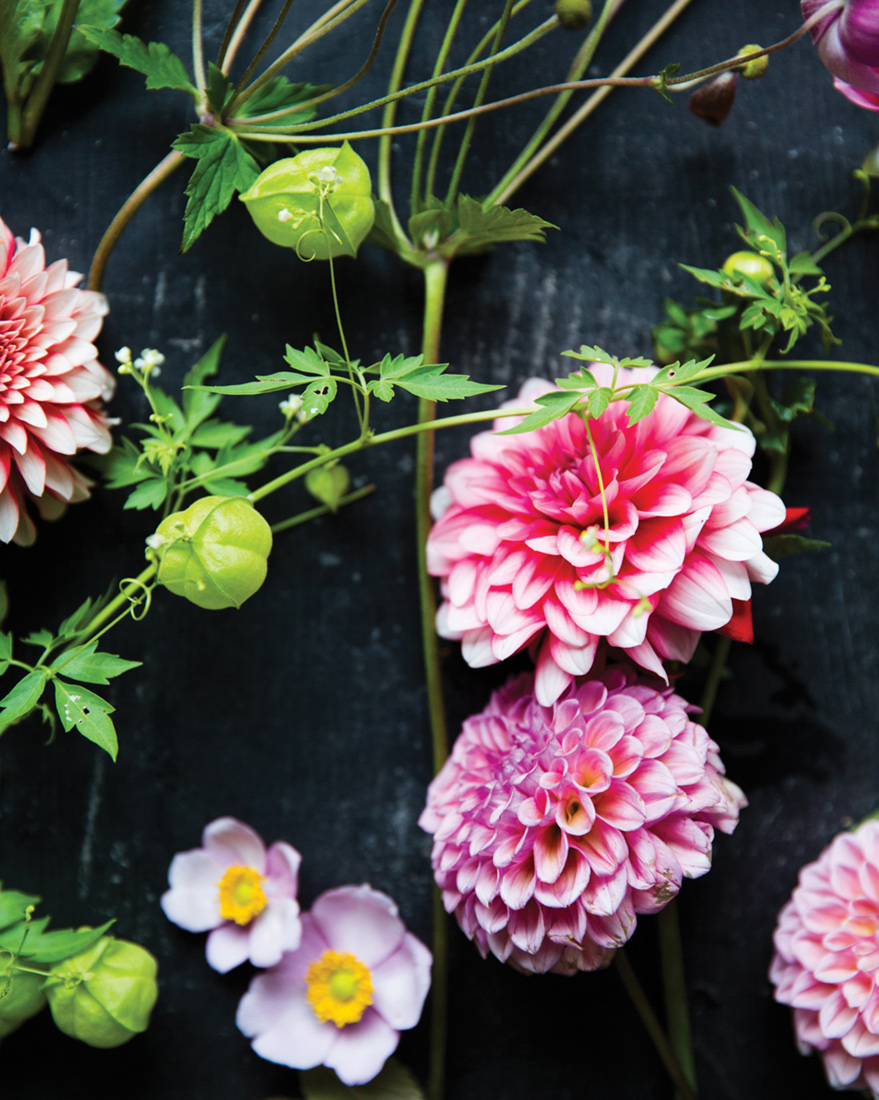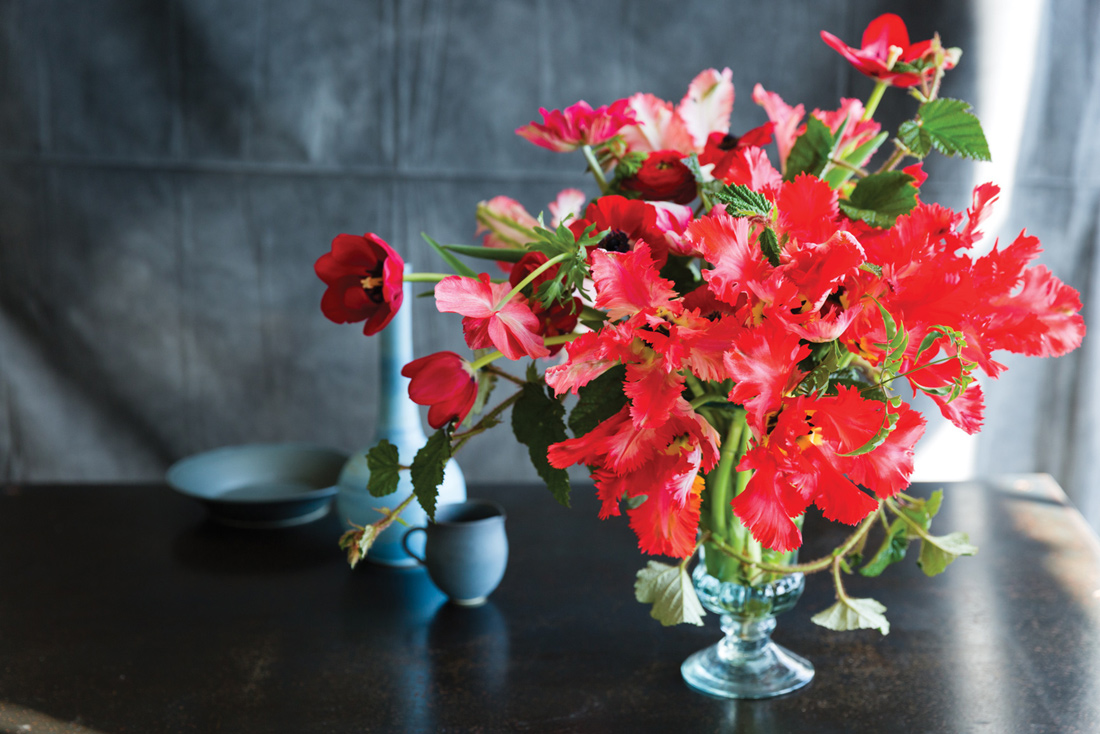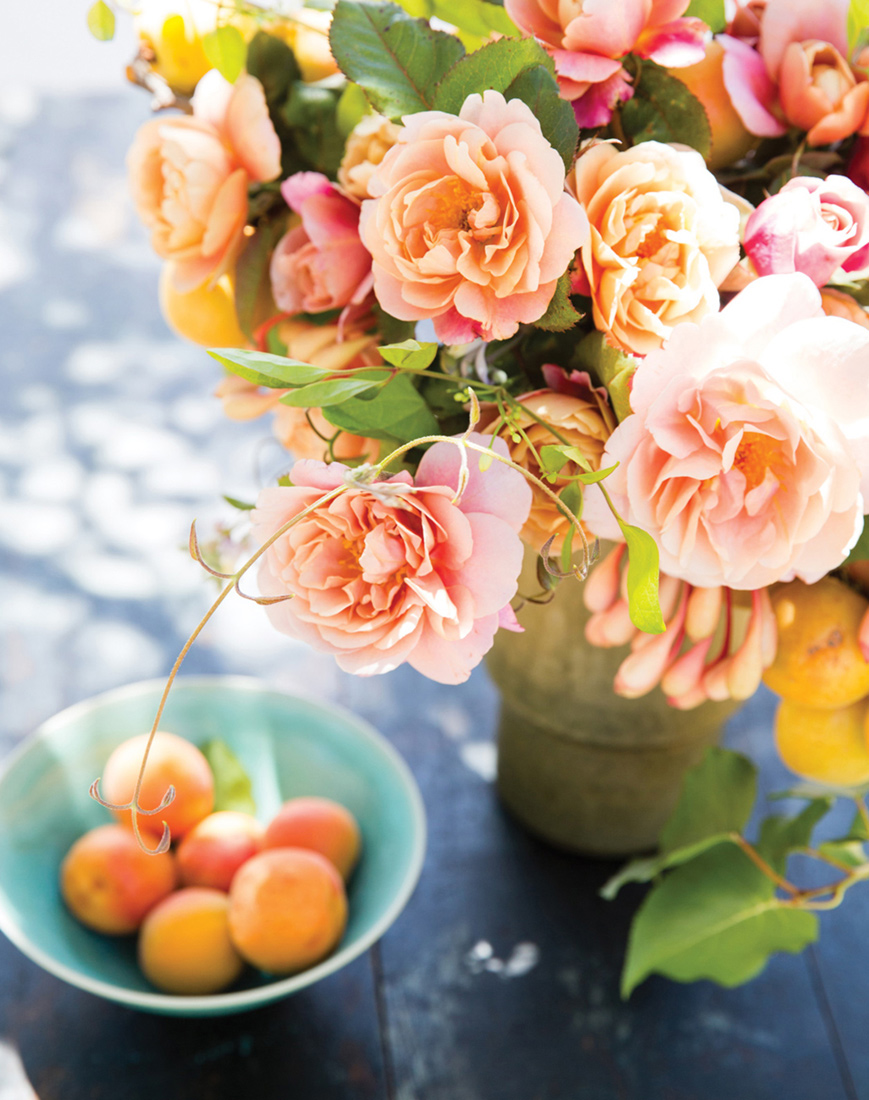Contents
Copyright 2016 by Ariella Chezar
Photographs copyright 2016 by Erin Kunkel
All rights reserved.
Published in the United States by Ten Speed Press, an imprint of the Crown Publishing Group, a division of Penguin Random House LLC, New York.
www.crownpublishing.com
www.tenspeed.com
Ten Speed Press and the Ten Speed Press colophon are registered trademarks of Penguin Random House LLC.
Library of Congress Cataloging-in-Publication Data
Names: Chezar, Ariella, author. | Michaels, Julie, author.
Title: The flower workshop : lessons in arranging blooms, branches, fruits, and foraged materials / by Ariella Chezar, with Julie Michaels.
Description: First edition. | Berkeley : Ten Speed Press, 2016. | Includes bibliographical references and index.
Identifiers: LCCN 2015027664| ISBN 9781607747659 (hardcover : alk. paper) | ISBN 9781607747666 (ebook : alk. paper)
Subjects: LCSH: Flower arrangement.
Classification: LCC SB449 .C444 2016 | DDC 745.92--dc23 LC record available at http://lccn.loc.gov/2015027664
Hardcover ISBN:9781607747659
eBook ISBN:9781607747666
eBook design adapted from printed book design by Emma Campion and Margaux Keres
First Edition
v4.1
a
to my family
contents
Introduction
Is there anything that can transform a moment, a morning, a mood, or a space as instantly as an array of fresh flowers? Their color and aliveness, their fragrance, their movement, their ability to attract the eye (and distract it!), and the sheer sensual pleasure they give make them nearly miraculous.
While some of my favorite varieties, combinations, and ingredients have changed since I started my company almost twenty years ago, my design philosophy and devotion to color, texture, and seasonality are as vital to me as ever.
Over the years, Ive been asked to share my floral philosophy in a variety of workshop settings. Ive held these classes on flower farms in California and the Netherlands, at Hawaiian resorts, and in New York, Charleston, and other major cities. Depending on the location, Ill take my students foraging in the woods or roaming the aisles of a local flower market. Well then spend time prepping each blossom; studying color, containers, and placement; and fashioning arrangements and bouquets that reflect not only my design philosophy but my deep love of flowers. My aim, to quote poet Mary Oliver, is to work until I can hear the almost unhearable sound of the roses singing.
This book is meant to inspire. The following chapters show how to make arrangements that light up a dinner, spark a party, or decorate a wedding. Step-by-step instructions are included for every arrangement, but dont feel limited to the flowers Ive selected. Id prefer that you adopt my philosophy of floral design and use these recipes as a starting point. If you understand the concept of tone-on-tone arranging, of using a variety of blooms in similar colors, and if you learn to forage in your backyard and let what you find spark your creativity, you will come away with a point of view that can be applied to any occasion. My goal is for you to learn to create arrangements that go beyond pretty and into the realm of the dramatic, the unexpected, and sometimes even the magical.
Sometimes I wonder whether I would have ever worked in the flower world if Id grown up in a big city. As luck would have it, I grew up in the country, in a very small village in western Massachusetts. Over the years, I have also lived in bigger, busier places like Brooklyn and Berkeley, California, but I find myself returning to the fields and woods of my childhood for many reasons: peace, fresh air, starlight, and inspiration for my work. Whenever Im away from the country for too longdesigning a wedding in San Francisco or New York, teaching workshops in Amsterdam or Maui, or making bouquets for a photo shoot in ChicagoI long to return to the Berkshire hills, to the place and home where I grew up. The influence of that quiet, river-laced, vine-covered land is all over my soul, and it colors the work I do with plants, flowers, and interiors.
My parents were typical of many couples who moved from New York City to the Berkshires in the early 1970s. They wanted to make things and grow their own food, to be close to the land, and to raise their children in a peaceful place where we would be free to play and explore. My father, Howard Chezar, a carpenter and fine woodworker, built our home by hand with local timber. He designed our kitchen, dining area, and living room as one large space, surrounded by oversized windows, and with so many views and such light that sometimes it seemed as if we lived outdoors. From my earliest days, I remember sitting at our kitchen table staring at trees and miles of fields all the way to Catamount Mountain in the distance.
My mother, Famke Zonneveld, was an artist and teacher who grew up in Indonesia and the Netherlands. Like my father, she loved making things, and she had an innate appreciation for the beauty of the land. In addition to making our home a warm, comforting place, she spent time cooking, gardening, and painting landscapes inspired by the world outside our window. Anything she touched was an extension of her creative self. She encouraged my sister and me to run around outdoors as if it was our very own playroom.
In many ways, that world was also our classroom. My mother, who studied art and later taught at Waldorf Schools, instilled in us a deep appreciation for art and the natural world. We learned about color and form by constantly drawing from nature. We knew that paper came from trees because she showed us how to make it; we distilled dyes from plants and dipped beeswax candles. Wanting us to have direct experiences with those resources, our mom helped us plant and tend our own little gardens, taught us to sculpt with clay, knit with wool, and bake bread, and even showed us the beauty in something as simple as laundry drying in the sun.



